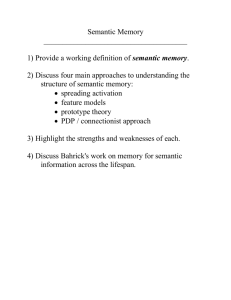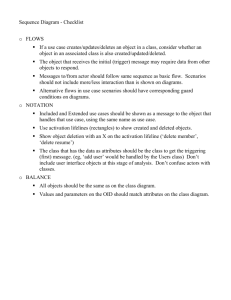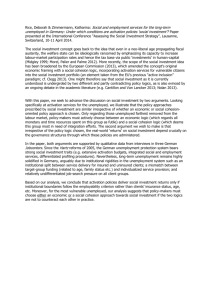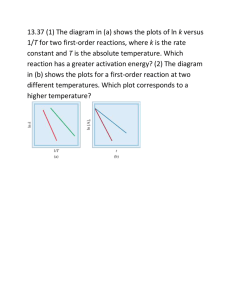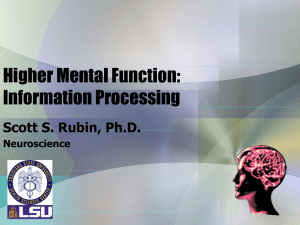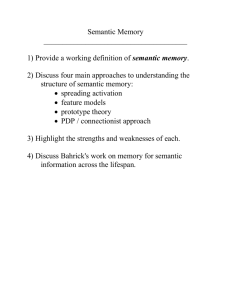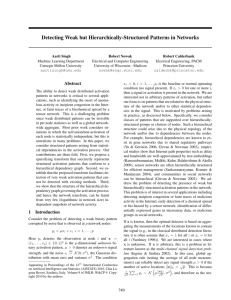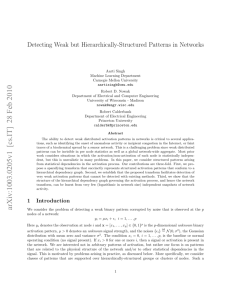Organization
advertisement
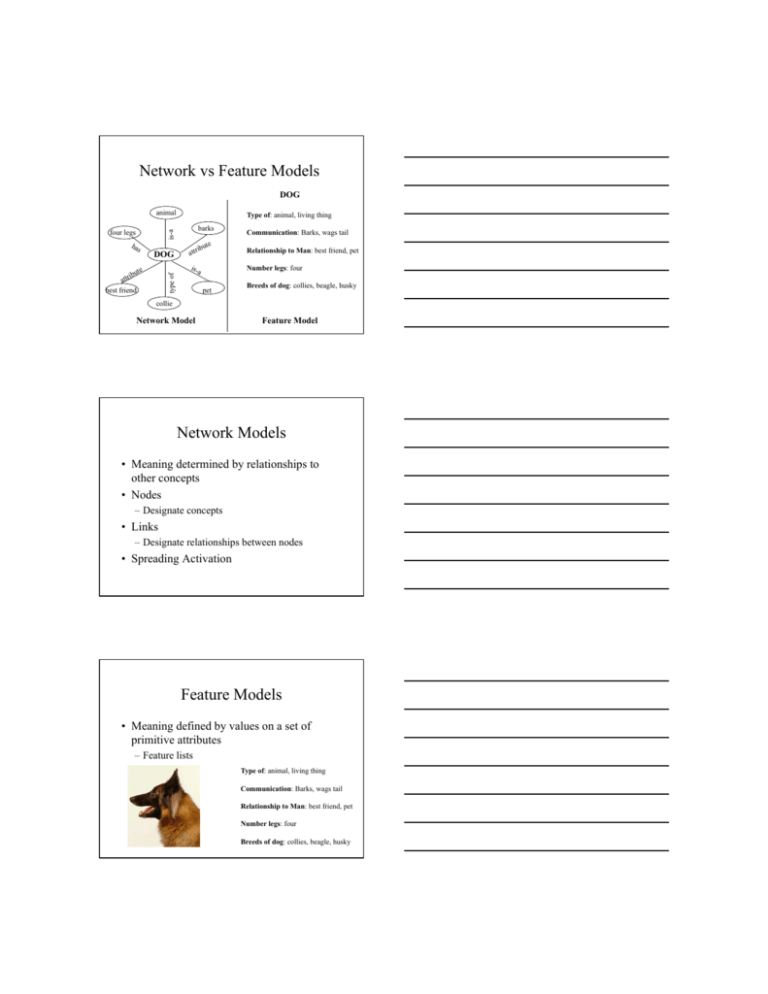
Network vs Feature Models DOG animal Type of: animal, living thing barks is-a four legs ha s DOG type of te ibu attr best friend Communication: Barks, wags tail te ibu attr Relationship to Man: best friend, pet isa Number legs: four pet Breeds of dog: collies, beagle, husky collie Network Model Feature Model Network Models • Meaning determined by relationships to other concepts • Nodes – Designate concepts • Links – Designate relationships between nodes • Spreading Activation Feature Models • Meaning defined by values on a set of primitive attributes – Feature lists Type of: animal, living thing Communication: Barks, wags tail Relationship to Man: best friend, pet Number legs: four Breeds of dog: collies, beagle, husky Hierarchical Model (Collins & Quillian, 1969, 1972) • First Network Model • TLC (Teachable Language Comprehender) – Implemented on a computer to pass the Turing Test Acting Humanly: Turing Test Approach • Operational definition of intelligence – Ability to achieve human – level performance on cognitive tasks Acting Humanly: Skills for Passing the Turing Test • Natural language processing – Communicate successfully • Knowledge representation – Store information • Automated reasoning – Answer questions/draw conclusions • Machine learning – Adapt to new circumstances Hierarchical Model living thing is born, dies, has cells animal plant has skin, moves, eats, breathes, bird wings, beak bat robin penguin chicken collie red breast doesn’t move, has leaves grows from seed dog beagle tree flower rose oak Hierarchical Organization • Knowledge organized in a hierarchical network of associations • Cognitive economy – Inherit features from nodes higher in the hierarchy – Allows inferences – Want to store information at the highest level possible Sentence Verification Task • Used to determine content and structure of semantic memory – Ss see sentence – Use semantic knowledge to determine truth of sentence • Dependent variable: RT – Longer RT’s = more processing – Longer RT’s = farther semantic distance traveled pine Problems • Typicality effect – “A robin is a bird” < “A penguin is a bird” • Reversals – “A chicken is a bird” > “A chicken is an animal” • False relatedness effect – “A bat is a bird” > “A bat is a plant” Spreading Activation Model (Collins & Loftus, 1975) • Representation is not strictly hierarchical – Organized by the interconnectedness between concepts • Links – Allows relationships other than IS-A – Differ in type, strength, importance Network Using Spreading Activation Is-A Has-A Spread of Activation • Perceive concept/name of concept – Node representing concept becomes activated • Activation spreads between nodes – Stronger links • Concepts more closely associated in semantic memory • Activation travels more quickly • Activation becomes weaker as it spreads Sentence Verification • All information in question becomes activated – Activation spreads through nodes until connecting path found – Intersection evaluated in terms of question – No intersection = “False” response • Heuristically determining relevance Problems with Spreading Activation Model • Complex and unconstrained – Predictions difficult • Models need to be less complex than system they are used to understand – Results in testable predictions ACT Theory (1976)/ ACT* (1983) • Attempts to account for all of cognition – Language, episodic memory, semantic, procedural memory • Assumptions – Mind is unitary – All cognitive processes are different products of same underlying system Propositions relation agent • Encode facts • Have labels – Identify semantic relationships among elements • Have links – Differ in strength agent Flower agent • More frequently encountered information is more strongly linked • Memory encoded in terms agent of meanings – Abstract Flower Is pretty relation Is Pretty Bill Is Red relation Object relation agent Flower Thought relation Is Pretty Type-Token Distinction • Enables model to distinguish between episodic and semantic information • Type – Refers to the concept • Token – Refers to a particular use/ instantiation of the concept R A Is Blue Chair A R Is Blue X Is-a Chair Prior knowledge about chairs Activation in ACT Model • Activation of concept – Sum of all the activation it receives from other concepts • Divided among the links connected to a concept – Strongest links receive more activation • Frequency of association determines strength Retrieval in ACT Model • Concepts contained within question are activated – Activation spreads through links to related concepts • Recognition – Occurs when appropriate propositions receive activation above threshold Fan of Concept • The number of links connecting a concept to other concepts • Fan effect – Increase in RT to answer a question associated with an increase in the fan of a concept • More links = larger fan = longer RT Feature Models • Alternative to network models • Knowledge represented by features characteristic of concept – Combines classical and family resemblance views of category representation Features in Feature Models • Defining features – Essential to meaning of concept – Necessary and sufficient for category membership • Characteristic features – True of most members in the category Multidimensional Scaling • Used to account for results of sentence verification tasks • Based on rated typicality of exemplars – Similar concepts located close to each other Answering Questions • Step 1 – Compare characteristic features • Feature overlap high = “True” • Feature overlap low = “False” • Feature overlap moderate – go to step 2 • Step 2 – Compare defining features – Assumed to be free from error Problems with Feature Model • • • • • • Determining features of concept Expertise Use of typicality ratings Decisions rely on feature comparison Category size effect Relations between category members



